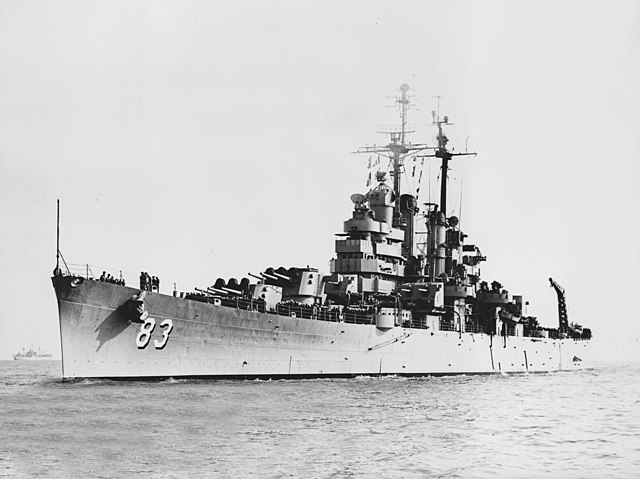The Fargo-class cruisers were a modified version of the Cleveland-class cruiser design; the main difference was a more compact pyramidal superstructure with single trunked funnel, intended to improve the arcs of fire of the anti-aircraft (AA) guns. The same type of modification differentiated the Baltimore and Oregon City classes of heavy cruisers, and to a lesser degree the Atlanta and Juneau classes of light cruisers. Changes were made in order to reduce the instability of the Cleveland-class light cruisers, especially their tendency to roll dangerously. The main battery turrets sat about a foot lower and the wing gunhouses were lowered to the main deck. The medium (40 mm) anti-aircraft mounts were also lowered.
USS Huntington in August 1948
The Cleveland class was a group of light cruisers built for the U.S. Navy during World War II. They were the most numerous class of light cruisers ever built. Fifty-two were ordered, and 36 were completed, 27 as cruisers and nine as light aircraft carriers. They were deactivated within a few years after the end of the war, but six were converted into missile ships, and some of these served into the 1970s. One ship of the class remains as a museum ship.
USS Manchester on 31 October 1952


